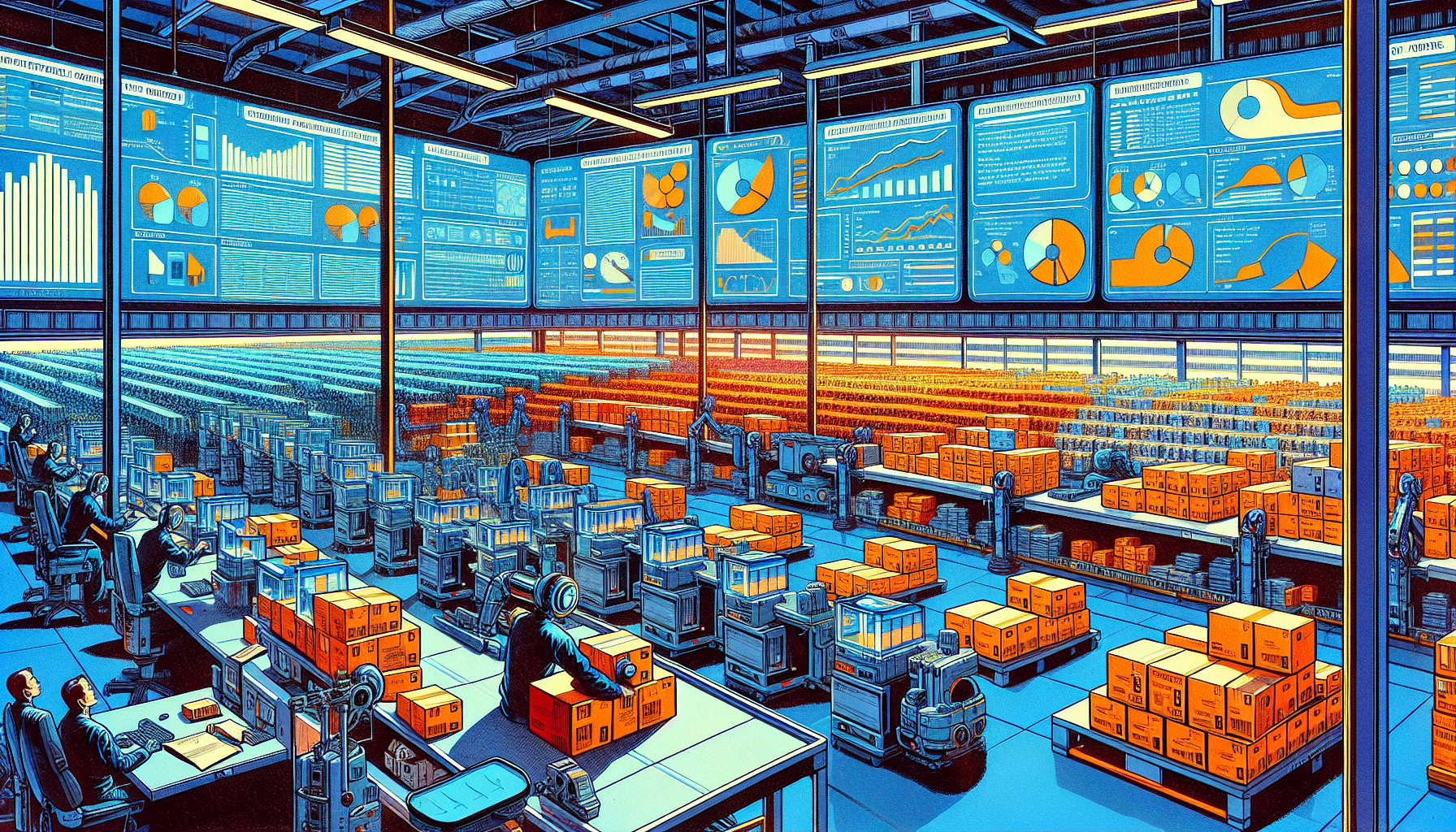Maximizing Your E-commerce Efficiency with Shopify and Amazon Fulfillment
Understanding Fulfillment in E-commerce
In the world of e-commerce, fulfillment is a big deal. It’s all about getting products from your warehouse to your customers quickly and efficiently. When you’re selling on multiple platforms like Shopify and Amazon, this can get complicated fast.
Let’s break down why fulfillment matters:
- Customer satisfaction depends on fast, accurate shipping
- Efficient fulfillment can save you money on shipping costs
- Good fulfillment practices help you manage inventory better
- It can give you an edge over competitors
Shopify and Amazon Integration
Integrating Shopify with Amazon can be a game-changer for your business. It allows you to tap into Amazon’s massive customer base while managing your store through Shopify’s user-friendly platform. This integration is key to streamlining your operations and boosting sales.
Here’s where things get interesting. To really make the most of this integration, you need a tool that can handle the complexities of multi-channel selling. That’s where Tom IT Marketplace Connect comes in. It’s designed specifically for Shopify users who want to sell on Amazon and other marketplaces without the headache of manual order and inventory management.
| Feature | Benefit |
|---|---|
| Unified Order Management | Manage all orders in one place |
| Real-time Tracking Sync | Keep customers informed automatically |
| Dynamic Inventory Updates | Prevent overselling across platforms |
With a tool like this, you can focus on growing your business instead of getting bogged down in the details of managing multiple sales channels.
Benefits of Fulfillment by Amazon (FBA)
When it comes to fulfillment by amazon shopify integration, there are some serious perks to consider. Amazon’s fulfillment network is massive and efficient, which can be a huge advantage for Shopify store owners.
Here are some key benefits of using FBA:
- Access to Prime shipping, which can boost sales
- Amazon handles customer service and returns
- Scalability during peak seasons
- Potential for better Buy Box placement on Amazon
But it’s not just about the benefits. You need to know how to make it work for your Shopify store. That’s where shopify fulfillment amazon strategies come into play.
Optimizing Your Shopify Store for Amazon Fulfillment
To make the most of Amazon fulfillment for your Shopify store, you need to optimize your setup. This means ensuring your product listings are consistent across platforms and that your inventory syncs correctly.
Here’s a quick checklist:
- Align your SKUs between Shopify and Amazon
- Set up automatic inventory updates
- Create a system for handling returns across platforms
- Optimize your product titles and descriptions for both Shopify and Amazon
One tool that can help with this optimization is Tom IT Marketplace Connect. It’s designed to make the integration between Shopify and Amazon seamless, handling many of these tasks automatically.
Inventory Management Across Platforms
Effective inventory management is crucial when selling on multiple platforms. You don’t want to oversell on one platform and disappoint customers on another. This is where real-time inventory syncing becomes essential.
| Challenge | Solution |
|---|---|
| Overselling | Real-time inventory updates |
| Stock discrepancies | Centralized inventory management |
| Slow restocking | Automated low stock alerts |
Tools like Tom IT Marketplace Connect can help you maintain accurate inventory levels across all your sales channels, reducing the risk of stockouts or overselling.
Scaling Your Business with Multi-Channel Selling
Multi-channel selling is a powerful way to scale your e-commerce business. By selling on both Shopify and Amazon, you’re expanding your reach and tapping into different customer bases. But with growth comes complexity.
Here are some strategies for scaling effectively:
- Use automation tools to manage orders and inventory
- Develop a consistent brand experience across platforms
- Analyze sales data to inform inventory decisions
- Continuously optimize your listings for each platform
As you scale, consider how tools like Tom IT Marketplace Connect can help you manage the increased complexity. It’s designed to grow with your business, handling more orders and inventory as you expand.
Wrap-up
Maximizing your e-commerce efficiency with Shopify and Amazon fulfillment is about more than just connecting the two platforms. It’s about creating a seamless system that allows you to manage orders, inventory, and fulfillment across multiple channels without losing your mind.
By leveraging tools like Tom IT Marketplace Connect, you can automate many of the complex processes involved in multi-channel selling. This allows you to focus on what really matters: growing your business and satisfying your customers.
Remember, the key to success in e-commerce is adaptability and efficiency. With the right tools and strategies, you can create a powerful selling machine that leverages the strengths of both Shopify and Amazon.
FAQ
Q: Can I use Amazon fulfillment for my Shopify orders?
A: Yes, you can use Fulfillment by Amazon (FBA) for your Shopify orders. This is often referred to as multi-channel fulfillment.
Q: How do I sync my Shopify inventory with Amazon?
A: You can use integration tools like Tom IT Marketplace Connect to automatically sync your inventory between Shopify and Amazon in real-time.
Q: Will using FBA for my Shopify store increase my shipping costs?
A: While FBA does come with fees, it can often be cost-effective due to Amazon’s negotiated shipping rates and efficient processes. It’s important to calculate the costs for your specific business.
Q: How can I manage returns when using Amazon fulfillment for my Shopify store?
A: Amazon can handle returns for multi-channel fulfillment orders. You’ll need to set up your return policy in your Shopify store and ensure it aligns with Amazon’s policies.
| Platform | Pros | Cons |
|---|---|---|
| Shopify | Full control, customization | Limited built-in audience |
| Amazon | Large customer base, FBA | Less control, higher fees |
| Integrated Approach | Best of both worlds | Requires careful management |





